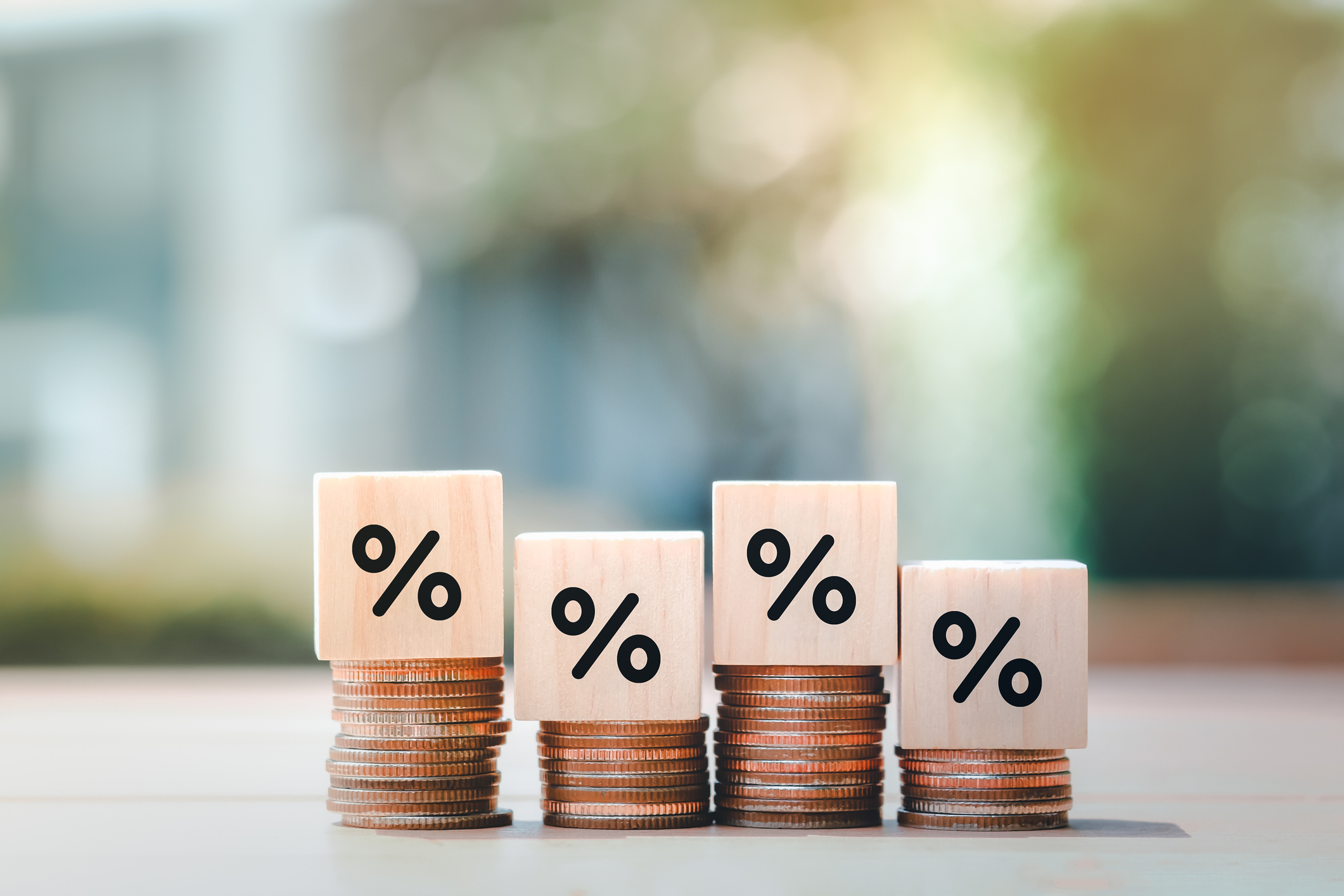Bank-Loan Funds Are in a Sweet Spot
They do well when rates are rising and the economy is strong.


As interest rates fell in 2019 and 2020, investors paid bank loans little attention. But an economic recovery and the likelihood of rising short-term interest rates are prime conditions for these loans, which pay an interest rate that adjusts every few months in step with a short-term bond benchmark. When yields rise, most bond prices fall. But bank loans, often called floating-rate loans, retain their value.
The managers at Fidelity Floating Rate High Income (FFRHX), Eric Mollenhauer and Kevin Nielsen, perform detailed analysis on each company before they add a bank loan to the fund.
Bank loans are typically issued to firms that have junk credit ratings (double-B to triple-C). That means they have a higher risk of default, so Mollenhauer and Nielsen are right to be choosy. Along with 20 analysts, each an industry specialist, the managers build a diversified portfolio one loan at a time based on a company's prospects over the next two to three years.
From just $107.88 $24.99 for Kiplinger Personal Finance
Become a smarter, better informed investor. Subscribe from just $107.88 $24.99, plus get up to 4 Special Issues

Sign up for Kiplinger’s Free Newsletters
Profit and prosper with the best of expert advice on investing, taxes, retirement, personal finance and more - straight to your e-mail.
Profit and prosper with the best of expert advice - straight to your e-mail.
Floating Rate High Income has a reputation for being more conservative than its peers, tilting toward firms rated double-B, the highest-quality end of high-yield credit ratings. That's still true, but lately the fund holds more of its assets than usual in loans rated single-B.
These days, it's a risk worth taking.
"With an accommodative Federal Reserve, pent-up demand and the potential for a big infrastructure package, our companies are set up well," says Nielsen. The fund currently has decent exposure to hotels and leisure companies. Outdoor gear retailer Bass Pro Shops is the top holding.
Regional firms once dominated the bank-loan market, but since 2008 it has more than doubled in size, to $1.2 trillion – as big as the high-yield bond market, says Mollenhauer. Companies search for such financing because the loans offer flexibility. They are short-term, with an average maturity of less than five years, and the loans can be paid off at the borrower's discretion. Now, many household names fill the market, including Caesars Resorts and Charter Communications (CHTR).
Since Mollenhauer took over in 2013 (Nielsen joined in 2018), the fund's 3.5% annualized return has beaten the typical bank-loan-fund but trailed the benchmark, the S&P/LSTA Leveraged Loan index. The fund yields 3.03%.

Profit and prosper with the best of Kiplinger's advice on investing, taxes, retirement, personal finance and much more. Delivered daily. Enter your email in the box and click Sign Me Up.

Nellie joined Kiplinger in August 2011 after a seven-year stint in Hong Kong. There, she worked for the Wall Street Journal Asia, where as lifestyle editor, she launched and edited Scene Asia, an online guide to food, wine, entertainment and the arts in Asia. Prior to that, she was an editor at Weekend Journal, the Friday lifestyle section of the Wall Street Journal Asia. Kiplinger isn't Nellie's first foray into personal finance: She has also worked at SmartMoney (rising from fact-checker to senior writer), and she was a senior editor at Money.
-
 Dow Dives 870 Points on Overseas Affairs: Stock Market Today
Dow Dives 870 Points on Overseas Affairs: Stock Market TodayFiscal policy in the Far East and foreign policy in the near west send markets all over the world into a selling frenzy.
-
 Quiz: Understanding Roth Conversions
Quiz: Understanding Roth ConversionsQuiz Discover if a Roth conversion is the right move for you by taking our quick quiz.
-
 How Prices Have Changed in Trump's First Year
How Prices Have Changed in Trump's First YearTrump campaigned on bringing prices down for Americans. Here's where prices stand one year into his second term.
-
 The December CPI Report Is Out. Here's What It Means for the Fed's Next Move
The December CPI Report Is Out. Here's What It Means for the Fed's Next MoveThe December CPI report came in lighter than expected, but housing costs remain an overhang.
-
 How Worried Should Investors Be About a Jerome Powell Investigation?
How Worried Should Investors Be About a Jerome Powell Investigation?The Justice Department served subpoenas on the Fed about a project to remodel the central bank's historic buildings.
-
 The December Jobs Report Is Out. Here's What It Means for the Next Fed Meeting
The December Jobs Report Is Out. Here's What It Means for the Next Fed MeetingThe December jobs report signaled a sluggish labor market, but it's not weak enough for the Fed to cut rates later this month.
-
 The November CPI Report Is Out. Here's What It Means for Rising Prices
The November CPI Report Is Out. Here's What It Means for Rising PricesThe November CPI report came in lighter than expected, but the delayed data give an incomplete picture of inflation, say economists.
-
 The Delayed November Jobs Report Is Out. Here's What It Means for the Fed and Rate Cuts
The Delayed November Jobs Report Is Out. Here's What It Means for the Fed and Rate CutsThe November jobs report came in higher than expected, although it still shows plenty of signs of weakness in the labor market.
-
 December Fed Meeting: Updates and Commentary
December Fed Meeting: Updates and CommentaryThe December Fed meeting is one of the last key economic events of 2025, with Wall Street closely watching what Chair Powell & Co. will do about interest rates.
-
 The Delayed September Jobs Report Is Out. Here's What It Means for the Fed
The Delayed September Jobs Report Is Out. Here's What It Means for the FedThe September jobs report came in much higher than expected, lowering expectations for a December rate cut.
-
 October Fed Meeting: Updates and Commentary
October Fed Meeting: Updates and CommentaryThe October Fed meeting is a key economic event, with Wall Street turned into what Fed Chair Powell & Co. did about interest rates.